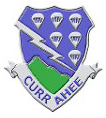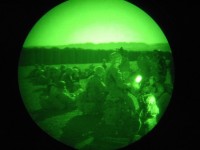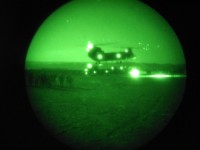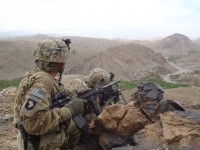Written by Staff Sgt. Matt Graham
Task Force Currahee Public Affairs

 Paktika Province, Afghanistan – Soldiers from Task Force White Currahee and Afghan National Security Forces denied insurgents freedom of movement across the Pakistan during Operation Sarak Basta III from June 21st-23rd.
Paktika Province, Afghanistan – Soldiers from Task Force White Currahee and Afghan National Security Forces denied insurgents freedom of movement across the Pakistan during Operation Sarak Basta III from June 21st-23rd.
Soldiers from the 2nd Battalion, 506th Infantry Regiment, 4th Brigade Combat Team, 101st Airborne Division with their counterparts, the Afghan National Army Soldiers from the 2nd Kandak, 2nd Brigade of the 203rd Corps, and the Afghan Border Police of the 2nd Zone conducted the operation in Paktika Province, Afghanistan.

The main objective of Sarak Basta was to find where insurgent fighters were crossing the border coming into and leaving Afghanistan and stop them.
“Denying the flow of fighters across the border through illegal border crossing points has a direct impact and correlation on the number of attacks throughout the interior of Afghanistan,” said U.S. Army Capt. Christopher Tanner, the commander for Company C, 1st Battalion, 506th Inf. Regt. and native of Birmingham, AL. “Every fighter we stop at the border is one that does not reach the interior to disrupt the Government of the Islamic Republic of Afghanistan’s peace and security efforts.”
Tanner commanded the main element, whose mission was to spread itself along roughly an 80-kilometer section of the border and stop insurgents as they attempted to move personnel and supplies from Pakistan into Afghanistan.
The harsh terrain made it difficult for Coalition Forces to maneuver and obtain a tactically advantageous position.

“We had to move from the valley floor to the high ground in order to be able to provide overwatch for the element clearing the villages, at night, while using Night Optical Devices,” said Tanner.
On this particular mission, the ANSF had the ability to witness first hand what the elite Afghan Commandos were capable of doing, Tanner said. Afghan Commandos are the equivalent to the U.S. Army’s Special Forces.
“It was very empowering for them to see the commandos, to see their competence and capability and to want to emulate that,” said Tanner. “We lead our ANA counterparts through personal example every day, but it is much more powerful to see one of their own providing that model to look up to for them.”
This mission was important for several reasons, the more immediate being to work with the ANSF to improve their capability to move in this harsh terrain and out maneuver the enemy, said Tanner.
The broader importance of the mission was for the U.S. forces to continue to teach their Afghan counterparts to successfully use their internal logistic and support systems to sustain themselves as they transition from the support of U.S. forces.
“Coalition forces will not be in Afghanistan forever, so it is vital that the local populace sees and believes that their government and their military is quite capable of providing for their welfare and security,” said U.S. Army 1st Lt. Andrew Campbell, a platoon leader from Company C, who calls Houston home.
Even though this particular mission did not see direct action with the enemy, Tanner said he feels like progress has been made.
“Locals were initially scared and distrustful due to the continuous insurgent intimidation in this area, but once they realized we were here to help, they began to open up and provide information about insurgents and their movements,” he said.






